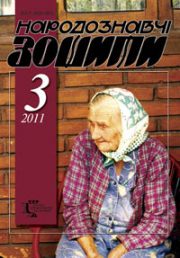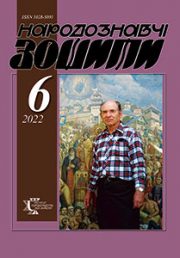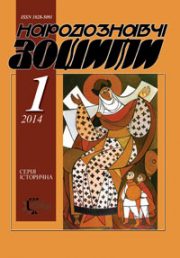The Ethnology Notebooks. 2021. # 1 (157), P. 163—169
УДК 726:2-523.4(477.44)
DOI https://doi.org/10.15407/nz2021.01.163
Natalia URSU
- ORCID ID: https://orcid.org/0000-0002-2660-2144
- Doctor of Art Criticism, Professor,
- Fine and Applied Arts and Artworks Restoration
- Department, Kamianets-Podilskyi
- Ivan Ohiіenko National University,
- Ogienko Str., 61, Kamianets-Podilskyi,
- Khmelnytsky region, 32301, Ukraine
- e-mail: ursu@kpnu.edu.ua
Ivan HUTSUL
ORCID ID: https://orcid.org/0000-0002-4797-5812
- Candidate of Art History, Associate Professor,
- Department, Kamianets-Podilskyi
- Ivan Ohiіenko National University,
- Ogienko Str., 61, Kamianets-Podilskyi,
- Khmelnytsky region, 32301, Ukraine
- e-mail: hutsul@kpnu.edu.ua
The purpose of the article is to consider the Dominican monastery complex and the Church of the Annunciation of the Blessed Virgin Mary in Vinnytsia in the Bratslav region (Podillya), which have so far remained out of the attention of scholars and researchers of sacred architecture and art. The research methodology includes a comparative analysis of archival and iconographic materials; methods of artistic and stylistic analysis and reconstruction are used. The scientific novelty of the work is that for the first time some iconographic materials from the National Museum of Krakow (Poland) and archival sources from the Russian State Historical Archive in St. Petersburg, which concern the history of the building and its existence, its religious affiliation, interior decoration, etc. Stages in the history of the origin of architectural construction are considered, the names of the beneficiaries and donors of the church are covered. According to the time of its creation, the building has Baroque stylistic features with layers of later reconstructions. Emphasis is placed on the spatial construction of the monastery, which is based on a strict relationship of functionality and form. The church in plan is a straight cross with a very short longitudinal «crossbar» — a transept. The temple is rectangular in plan, three-nave, six-foot. The interior contained a large number of altars painted on the wall.
Conclusions. The artistic work of the Dominicans in Eastern Podillya testifies to the combination, synthesis of two cultures — Ukrainian and Polish, the integration of mentality, spirituality and creativity, the dualistic nature of monuments, which was complemented by Western European influences brought by invited architects, sculptors, painters. Painters applied arts and adjusted by patrons and founders of the Dominican settlements. The construction of the temple was built in accordance with the requirements of the time and is an integral part of the sacred artistic heritage of Ukraine.
Keywords: Roman Catholic church, artistic heritage, church, monastery, Dominican order, architecture.
REFERENCES
- Shevchuk, V.O. (1990). The road is a thousand years old. Kyiv: Sov. author [in Ukrainian].
- Kamyanets-Podilsky State City Archive (KPDMA). (1823). Field materials (P. 685). Roman Catholic Spiritual Consistory (Op. 4. File № 21) [in Ukrainian].
- (1988). Materials of the Department of Historical Environment Reconstruction of the Department of Urban Planning and Architecture of the Vinnytsia Regional State Administration (Oh. 992) [in Ukrainian].
- (1983—1986). Monuments of urban planning and architecture of the Ukrainian SSR: ill. reference book: (Vol. 1—4). Kyiv: Budivelnyk [in Russian].
- Wolyniak, (M.J. Gizycki). (1923). List of Dominican monasteries of the Ruthenian province (Part 2). Krakow [in Polish].
- Malakov, D.V. (1982). Across the East Hem. Moscow: Iskysstvo [in Russian].
- (1828—1917). Russian State Historical Archive in St. Petersburg (RDIA). Field materials 821. Description 150. File № 554. Vinnytsia Dominican Monastery. Facade and plan [in Russian].







